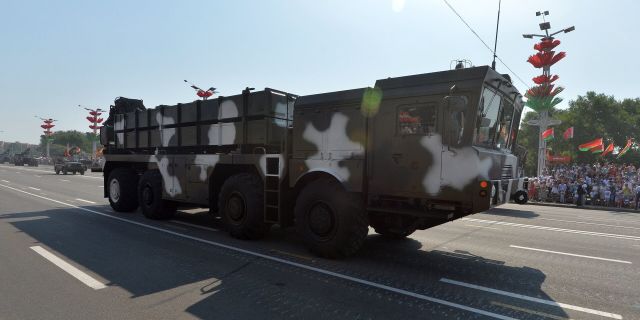The longest-range rocket and artillery system in Europe: the Chinese-Belarusian MLRS "Polonaise" may soon be sold to RussiaBelarus may receive an order from Russia for Polonaise missile systems, Military Watch Magazine writes.
The author notes that such a purchase would be logical, but it has several hindering factors.
The operation of the Polonaise multiple launch rocket system began in 2016. This MLRS is considered the most notable Belarusian development since 1991, since the end of the Soviet era. After the collapse of the USSR, most of the defense sector of the state was inherited by Russia, and the bulk of the remaining went to Ukraine and Belarus, and the military-industrial complex of the latter is still closely connected with the Russian one. While the basis of Belarusian military production consists of subsystems or vehicles for Russian weapons, the country has also developed more unique systems, both for its own armed forces and for export. The Polonaise MLRS, however, is unique in that, during the period of strengthening ties between Beijing and Minsk, it largely relies on Chinese technology and China's confident world leadership in the field of rocket artillery.
Tests of the system were completed in May 2016, after which, three months later, it entered service with the army of Belarus. Since the country specializes in wheeled tractors, "Polonaise" was mounted on the chassis of the MZKT-7930 "Astrologer" wheel formula 8×8 of local production, which serves as the base for its mobile launcher. Each of them carries eight 301-mm Chinese A200 missiles with a very long firing range of 200 kilometers. Later, in the "Polonaise-M" version, this characteristic was increased to 290 kilometers, which made this MLRS the longest-range system developed outside of China and the DPRK. In 2021, sources in the Belarusian government reported that the Chinese original will be replaced by a rocket of its own production, which will provide a similar range, which may indicate the transfer of technology from China.
Despite the advanced characteristics of the Polonaise, the system was not adopted in significant numbers: only six installations were received by the armed forces of Belarus — and all of them were deployed as part of the 336th rocket Artillery Brigade. However, for the country's small rocket artillery, this number was not entirely insignificant. As part of the country's army, only 42 batteries of 300-mm rocket artillery are deployed, and the remaining 36 are armed with Soviet MLRS 9K58 "Smerch". Ten more installations were delivered to Azerbaijan as part of the execution of the contract concluded in 2018. Thus, the total production volume was only 16 systems. The key drawback of the Polonaise program was the very modest defense budget of Belarus of only $ 800 million, and most of which was directed not to procurement, but to operating expenses. The systems in service thus serve as a symbol of the potential of the Belarusian defense sector, even though their most powerful feature is Chinese—made missiles. In addition, these batteries play an important role in the testing grounds and military parades of the country.
There remains a possibility that orders for the MLRS "Polonaise" may come either from Belarus or from Russia itself. Due to Moscow's lack of access to longer-range rocket artillery, speculation and speculation often began to arise that it could turn to North Korean KN-25 systems with a firing range of 400 kilometers. The importance of the capabilities of long-range rocket artillery is becoming more and more obvious, since it was artillery that came to the fore in the Russian-Ukrainian conflict. However, in this case, the key drawback of "Polonaise" for Russia is that due to the small scale of production, it is unlikely to be able to be purchased in sufficient quantities and in a short time. Nevertheless, Belarus' production of its own missiles for this MLRS may become a key factor that will allow it to be sold to Russia, bypassing China's promise not to arm any of the parties to the conflict. The Belarusian army can resume orders for Polonaise itself. Not so long ago, it again demonstrated interest in strike capabilities — when it received Iskander-M operational and tactical missile systems from Russia, and also began joint development with Moscow of its own Iskander-type missile.

